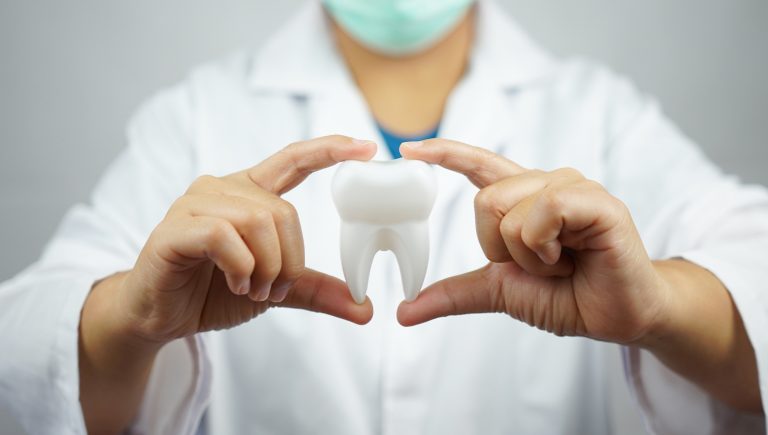Is Composite Bonding the Right Choice for Your Smile?
 Composite bonding is a popular cosmetic dental treatment that involves applying a tooth-coloured resin material to the teeth to improve their appearance. It is a relatively quick and easy way to address a variety of dental issues, including chipped or cracked teeth, gaps between teeth, and discolouration. However, many people wonder if composite bonding is worth the investment. In this blog post, we will explore the pros and cons of composite bonding to help you decide if it is right for you.
Composite bonding is a popular cosmetic dental treatment that involves applying a tooth-coloured resin material to the teeth to improve their appearance. It is a relatively quick and easy way to address a variety of dental issues, including chipped or cracked teeth, gaps between teeth, and discolouration. However, many people wonder if composite bonding is worth the investment. In this blog post, we will explore the pros and cons of composite bonding to help you decide if it is right for you.
INTERESTED IN COMPOSITE BONDING?
How Is Composite Bonding Performed?
Composite bonding involves the application of a tooth-coloured resin material to the teeth to improve their appearance.
The process typically involves the following steps:

- Preparation: The dentist will start by preparing the tooth surface by cleaning it thoroughly and roughening it slightly. This helps the bonding material adhere to the tooth more effectively.
- Application: The dentist will apply a liquid conditioner to the tooth surface to help the bonding material adhere to the tooth. The composite resin material is then applied in layers and shaped to match the natural contours of the tooth.
- Curing: The composite resin is cured or hardened using a special light, which helps to bond it to the tooth surface. The dentist may apply multiple layers of the resin, depending on the extent of the cosmetic dental work required.
- Finishing: After the bonding material has been cured, the dentist will shape and polish it to achieve a natural-looking finish that blends in with the surrounding teeth.
The entire process typically takes between 30 minutes to an hour per tooth, depending on the extent of the cosmetic work required.
The Pros And Cons Of Composite Bonding
Composite bonding has several advantages and disadvantages to consider when deciding whether it’s the right choice for you. Take a look…
PROS:
Affordable: Composite bonding is generally less expensive than other cosmetic dental procedures such as veneers or crowns.
Quick: Composite bonding can often be completed in a single dental appointment, unlike other procedures that may require multiple visits.
Non-invasive: The process of composite bonding typically involves minimal removal of tooth structure, making it a less invasive option compared to other dental procedures.
Versatile: Composite bonding can be used to address a variety of cosmetic dental concerns such as chips, cracks, gaps, and discolouration.
CONS:
While composite bonding can produce beautiful results, there are several potential drawbacks to consider:
Durability: Composite bonding is not as durable as other restorative dental procedures, such as dental crowns or veneers. The resin material used in bonding can chip, crack, or wear down over time, particularly if you bite down on hard objects like ice or pens.
Staining: Composite bonding material can become stained over time, particularly if you consume foods and beverages that are known to stain teeth, such as coffee, tea, and red wine.
Colour matching: Achieving an exact colour match between the bonding material and the natural color of your teeth can be difficult, particularly if you have discoloured or stained teeth. In some cases, multiple shades of bonding material may need to be used to achieve a natural-looking result.
Maintenance: Like natural teeth, composite bonding requires regular maintenance, including brushing, flossing, and regular dental checkups. Failure to maintain good oral hygiene can lead to decay or other oral health problems.
Limited use: Composite bonding is not suitable for all dental problems. It is typically used for minor cosmetic improvements, such as fixing chips or gaps in teeth, and is not recommended for major restorative work or for teeth that are severely damaged or decayed.
Composite Bonding Vs Dental Veneers
Composite bonding and dental veneers are two popular cosmetic dental procedures that can help improve the appearance of teeth. While both procedures aim to enhance the aesthetics of teeth, they differ in several ways.
Composite bonding is a versatile treatment that can be used to correct various cosmetic dental problems, including chipped, cracked, or stained teeth. It is a less invasive and less expensive option compared to veneers.
Dental veneers, on the other hand, are thin shells of porcelain or composite resin that are custom-made to fit over the front surface of teeth. Veneers are a more permanent solution to cosmetic dental problems, and they can last for up to 10-15 years with proper care. Veneers are more durable and resistant to staining than composite bonding, and they can be used to correct more severe cosmetic dental problems, such as large gaps, and crooked or misshapen teeth.
Composite bonding is a more conservative and less expensive option for minor cosmetic dental problems, while veneers are a more permanent and durable solution for more significant cosmetic dental issues. The best option for you will depend on your specific needs and the recommendation of your dentist.
When deciding whether composite bonding is worth it for you, it’s important to work with an experienced cosmetic dentist who can help you evaluate your options and choose the treatment that is best suited to your needs. Your dentist can also help you understand the potential risks and benefits of composite bonding and can help you determine whether this treatment is a good fit for you. Ultimately, the decision to undergo composite bonding is a personal one that should be based on your individual dental needs and goals. If you are considering this treatment, it’s important to do your research. If you have made the decision to choose this treatment, contact us today and we can help you get started!













